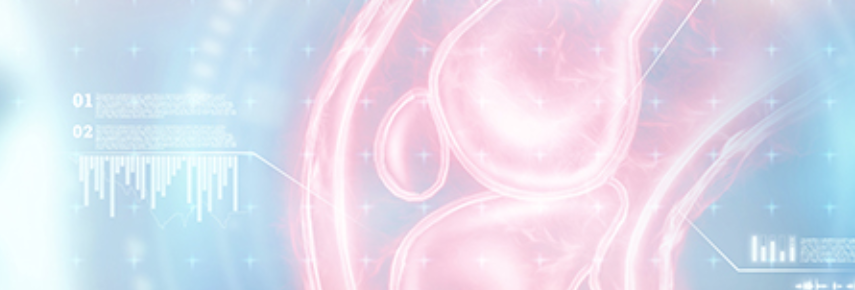Khalid Youssef, Xinheng Zhang, Ghazal Yoosefian, Yinyin Chen, Shing Fai Chan, Hsin-Jung Yang, Keyur Vora, Andrew Howarth, Andreas Kumar, Behzad Sharif, Rohan Dharmakumar
{"title":"利用数据驱动的原位对比度映射,通过原位 T1 心脏 MRI 对慢性心肌梗死进行可靠的视觉检测。","authors":"Khalid Youssef, Xinheng Zhang, Ghazal Yoosefian, Yinyin Chen, Shing Fai Chan, Hsin-Jung Yang, Keyur Vora, Andrew Howarth, Andreas Kumar, Behzad Sharif, Rohan Dharmakumar","doi":"10.1148/ryct.230338","DOIUrl":null,"url":null,"abstract":"<p><p>Purpose To investigate whether infarct-to-remote myocardial contrast can be optimized by replacing generic fitting algorithms used to obtain native T1 maps with a data-driven machine learning pixel-wise approach in chronic reperfused infarct in a canine model. Materials and Methods A controlled large animal model (24 canines, equal male and female animals) of chronic myocardial infarction with histologic evidence of heterogeneous infarct tissue composition was studied. Unsupervised clustering techniques using self-organizing maps and <i>t</i>-distributed stochastic neighbor embedding were used to analyze and visualize native T1-weighted pixel-intensity patterns. Deep neural network models were trained to map pixel-intensity patterns from native T1-weighted image series to corresponding pixels on late gadolinium enhancement (LGE) images, yielding visually enhanced noncontrast maps, a process referred to as <i>data-driven native mapping</i> (DNM). Pearson correlation coefficients and Bland-Altman analyses were used to compare findings from the DNM approach against standard T1 maps. Results Native T1-weighted images exhibited distinct pixel-intensity patterns between infarcted and remote territories. Granular pattern visualization revealed higher infarct-to-remote cluster separability with LGE labeling as compared with native T1 maps. Apparent contrast-to-noise ratio from DNM (mean, 15.01 ± 2.88 [SD]) was significantly different from native T1 maps (5.64 ± 1.58; <i>P</i> < .001) but similar to LGE contrast-to-noise ratio (15.51 ± 2.43; <i>P</i> = .40). Infarcted areas based on LGE were more strongly correlated with DNM compared with native T1 maps (<i>R</i><sup>2</sup> = 0.71 for native T1 maps vs LGE; <i>R</i><sup>2</sup> = 0.85 for DNM vs LGE; <i>P</i> < .001). Conclusion Native T1-weighted pixels carry information that can be extracted with the proposed DNM approach to maximize image contrast between infarct and remote territories for enhanced visualization of chronic infarct territories. <b>Keywords:</b> Chronic Myocardial Infarction, Cardiac MRI, Data-Driven Native Contrast Mapping <i>Supplemental material is available for this article.</i> © RSNA, 2024.</p>","PeriodicalId":21168,"journal":{"name":"Radiology. Cardiothoracic imaging","volume":"6 4","pages":"e230338"},"PeriodicalIF":4.2000,"publicationDate":"2024-08-01","publicationTypes":"Journal Article","fieldsOfStudy":null,"isOpenAccess":false,"openAccessPdf":"https://www.ncbi.nlm.nih.gov/pmc/articles/PMC11369652/pdf/","citationCount":"0","resultStr":"{\"title\":\"Enabling Reliable Visual Detection of Chronic Myocardial Infarction with Native T1 Cardiac MRI Using Data-Driven Native Contrast Mapping.\",\"authors\":\"Khalid Youssef, Xinheng Zhang, Ghazal Yoosefian, Yinyin Chen, Shing Fai Chan, Hsin-Jung Yang, Keyur Vora, Andrew Howarth, Andreas Kumar, Behzad Sharif, Rohan Dharmakumar\",\"doi\":\"10.1148/ryct.230338\",\"DOIUrl\":null,\"url\":null,\"abstract\":\"<p><p>Purpose To investigate whether infarct-to-remote myocardial contrast can be optimized by replacing generic fitting algorithms used to obtain native T1 maps with a data-driven machine learning pixel-wise approach in chronic reperfused infarct in a canine model. Materials and Methods A controlled large animal model (24 canines, equal male and female animals) of chronic myocardial infarction with histologic evidence of heterogeneous infarct tissue composition was studied. Unsupervised clustering techniques using self-organizing maps and <i>t</i>-distributed stochastic neighbor embedding were used to analyze and visualize native T1-weighted pixel-intensity patterns. Deep neural network models were trained to map pixel-intensity patterns from native T1-weighted image series to corresponding pixels on late gadolinium enhancement (LGE) images, yielding visually enhanced noncontrast maps, a process referred to as <i>data-driven native mapping</i> (DNM). Pearson correlation coefficients and Bland-Altman analyses were used to compare findings from the DNM approach against standard T1 maps. Results Native T1-weighted images exhibited distinct pixel-intensity patterns between infarcted and remote territories. Granular pattern visualization revealed higher infarct-to-remote cluster separability with LGE labeling as compared with native T1 maps. Apparent contrast-to-noise ratio from DNM (mean, 15.01 ± 2.88 [SD]) was significantly different from native T1 maps (5.64 ± 1.58; <i>P</i> < .001) but similar to LGE contrast-to-noise ratio (15.51 ± 2.43; <i>P</i> = .40). Infarcted areas based on LGE were more strongly correlated with DNM compared with native T1 maps (<i>R</i><sup>2</sup> = 0.71 for native T1 maps vs LGE; <i>R</i><sup>2</sup> = 0.85 for DNM vs LGE; <i>P</i> < .001). Conclusion Native T1-weighted pixels carry information that can be extracted with the proposed DNM approach to maximize image contrast between infarct and remote territories for enhanced visualization of chronic infarct territories. <b>Keywords:</b> Chronic Myocardial Infarction, Cardiac MRI, Data-Driven Native Contrast Mapping <i>Supplemental material is available for this article.</i> © RSNA, 2024.</p>\",\"PeriodicalId\":21168,\"journal\":{\"name\":\"Radiology. Cardiothoracic imaging\",\"volume\":\"6 4\",\"pages\":\"e230338\"},\"PeriodicalIF\":4.2000,\"publicationDate\":\"2024-08-01\",\"publicationTypes\":\"Journal Article\",\"fieldsOfStudy\":null,\"isOpenAccess\":false,\"openAccessPdf\":\"https://www.ncbi.nlm.nih.gov/pmc/articles/PMC11369652/pdf/\",\"citationCount\":\"0\",\"resultStr\":null,\"platform\":\"Semanticscholar\",\"paperid\":null,\"PeriodicalName\":\"Radiology. Cardiothoracic imaging\",\"FirstCategoryId\":\"1085\",\"ListUrlMain\":\"https://doi.org/10.1148/ryct.230338\",\"RegionNum\":0,\"RegionCategory\":null,\"ArticlePicture\":[],\"TitleCN\":null,\"AbstractTextCN\":null,\"PMCID\":null,\"EPubDate\":\"\",\"PubModel\":\"\",\"JCR\":\"Q1\",\"JCRName\":\"RADIOLOGY, NUCLEAR MEDICINE & MEDICAL IMAGING\",\"Score\":null,\"Total\":0}","platform":"Semanticscholar","paperid":null,"PeriodicalName":"Radiology. Cardiothoracic imaging","FirstCategoryId":"1085","ListUrlMain":"https://doi.org/10.1148/ryct.230338","RegionNum":0,"RegionCategory":null,"ArticlePicture":[],"TitleCN":null,"AbstractTextCN":null,"PMCID":null,"EPubDate":"","PubModel":"","JCR":"Q1","JCRName":"RADIOLOGY, NUCLEAR MEDICINE & MEDICAL IMAGING","Score":null,"Total":0}
引用次数: 0

 求助内容:
求助内容: 应助结果提醒方式:
应助结果提醒方式:


